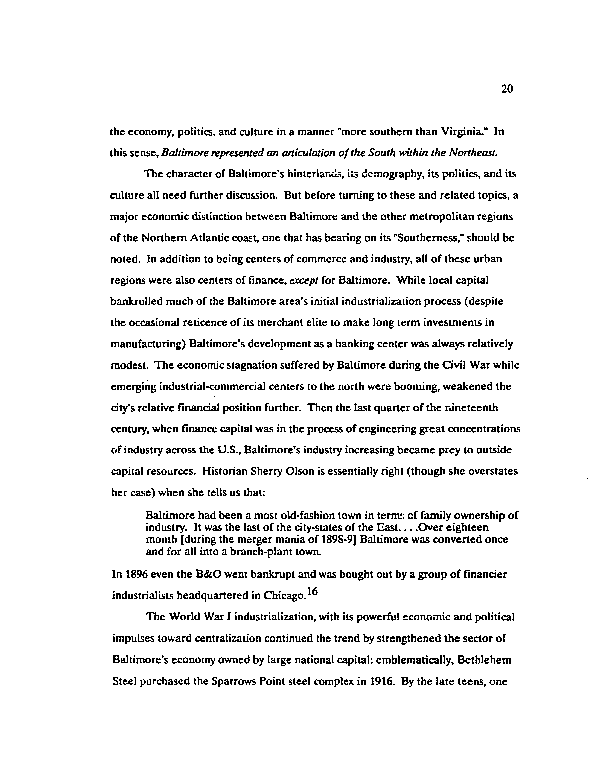|
20
the economy, politics, and culture in a manner "more southern than Virginia." In
this sense, Baltimore represented an articulation of the South within the Northeast.
The character of Baltimore's hinterlands, its demography, its politics, and its
culture all need further discussion. But before turning to these and related topics, a
major economic distinction between Baltimore and the other metropolitan regions
of the Northern Atlantic coast, one that has bearing on its "Southerness," should be
noted. In addition to being centers of commerce and industry, all of these urban
regions were also centers of finance, except for Baltimore. While local capital
bankrolled much of the Baltimore area's initial industrialization process (despite
the occasional reticence of its merchant elite to make long term investments in
manufacturing) Baltimore's development as a banking center was always relatively
modest. The economic stagnation suffered by Baltimore during the Civil War while
emerging industrial-commercial centers to the north were booming, weakened the
city's relative financial position further. Then the last quarter of the nineteenth
century, when finance capital was in the process of engineering great concentrations
of industry across the U.S., Baltimore's industry increasing became prey to outside
capital resources. Historian Sherry Olson is essentially right (though she overstates
her case) when she tells us that:
Baltimore had been a most old-fashion town in terms cf family ownership of
industry. It was the last of the city-states of the Hast... .Over eighteen
month [during the merger mania of 1898-9] Baltimore was converted once
and for all into a branch-plant town.
In 1896 even the B&O went bankrupt and was bought out by a group of financier
industrialists headquartered in Chicago.
The World War I industrialization, with its powerful economic and political
impulses toward centralization continued the trend by strengthened the sector of
Baltimore's economy owned by large national capital: emblematically, Bethlehem
Steel purchased the Sparrows Point steel complex in 1916. By the late teens, one
|

